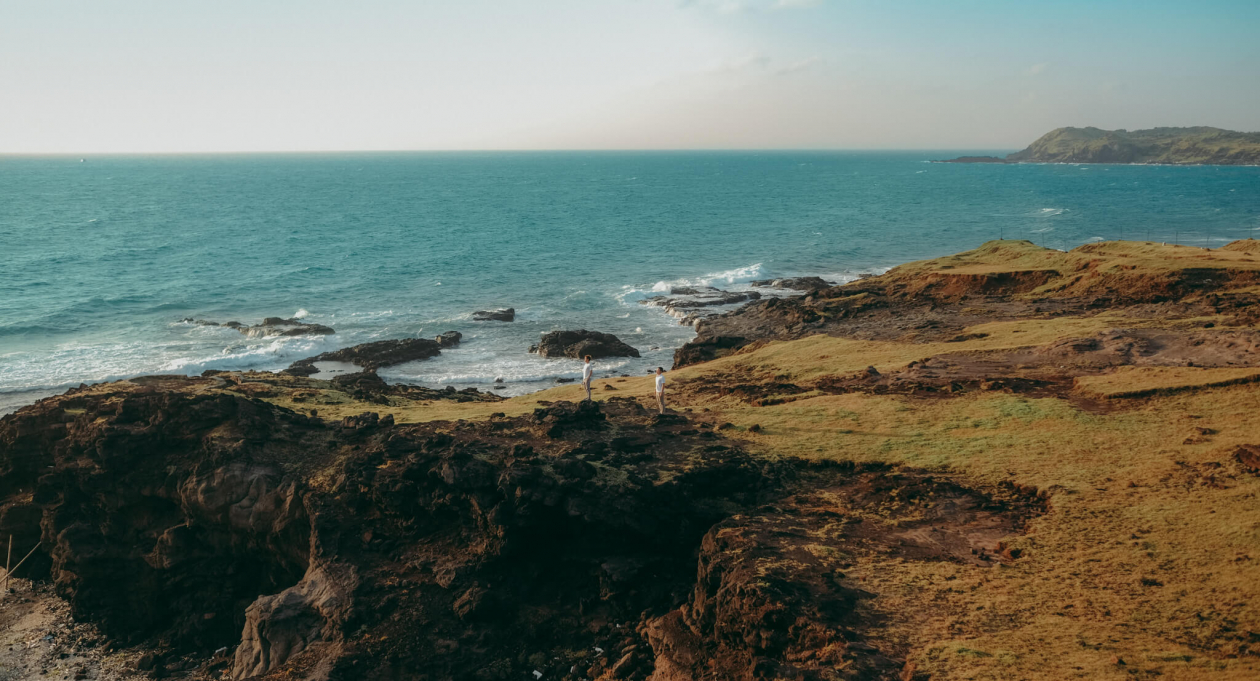
The Emerging Island Getaway of Phu Quy in Vietnam
Going to Dao Phu Quy, which translates to "island of riches," is a must-do during any trip to the province of Binh Thuan. (The area has also been referred to as "the small Bali" or "the Maldives" of Vietnam because of its gorgeous flora and crystal-clear waterways.)
The island has that isolated, wild attraction because it is extremely remote—it is located in the East Sea, about 120 kilometers from Phan Thiet city. Right now, most visitors are young, knowledgeable Vietnamese travelers. So while it's still relatively unknown, it's worthwhile to visit this emerging location.
About 30,000 people dwell on the small island (16 x 18 km2), mostly in the communities of Tam Thanh, Ngu Phung, and Long Hai. It is less developed than other islands in the nation since commercial tourism hasn't really taken off there. However, it boasts a strong infrastructure, some modestly priced homestays and guesthouses, an abundance of seafood, and amiable residents.
Stunning seascapes, secluded natural beauty, and rural charm are further factors for visiting. Imagine expansive bays, lava-rock cliffs, pristine waterways, holy places, thriving fruit orchards, and lush, untamed forests. There are vistas to climb and coral reefs to explore, making this an ideal location for hikers and snorkelers. Find out what to eat and do on the island by reading on.
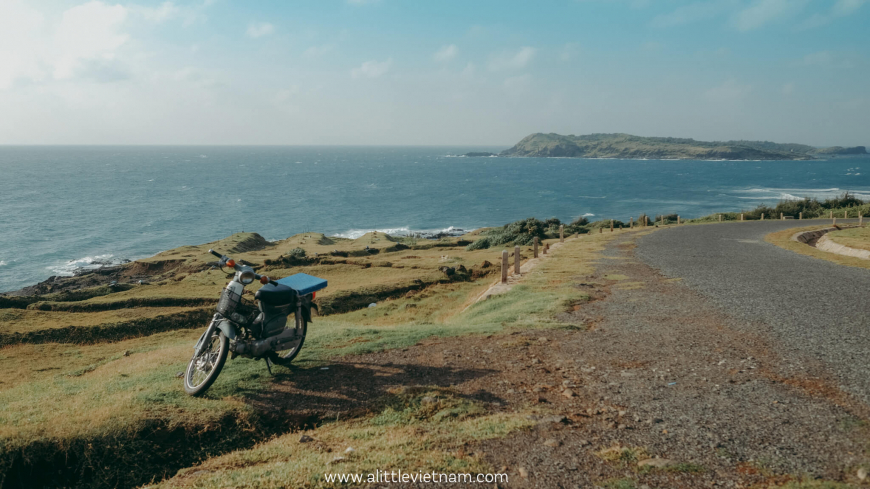 Getting there
Getting there
You must first travel to Phan Thiet City in order to reach Phu Quy Island. There isn't an airport there, so travel to Dalat, Ho Chi Minh City, or Nha Trang instead. then take a train or bus to Phan Thiet. After that, you must travel to the port in order to board a boat for the island. The journey will take between 2.5 and 3.5 hours, depending on the type of boat. It is advisable for seasickness-prone travelers to take motion sickness medicine in advance. On the island, you can either reserve a taxi through your lodging host or hire a bike or motorbike.
What is the ideal time to book your trip, then? Between December and June, which is the dry season, you can go. But when the seas are calm, the best swimming months are March through April.
Please take note: Withdraw cash prior to your journey as there aren't many ATMs available. By picking up after yourself and eliminating single-use plastic while there, you may reduce your influence on the environment.
Eating regimen
Naturally, Phu Quy is a delight for seafood lovers since the island's economy is based primarily on fishing. Seafood restaurants are widely available. Eating extremely fresh catch while floating about on a fishing raft is also a lot of pleasure. You must try the following in particular: king crab, moon crab, lobster, grouper, squid, and snails.
A large crab with solid, delicious flesh, the king crab is famed for its size. King crabs are rather expensive given their size and difficulty of catching them. Treating yourself is okay.
Another treat that's famously difficult to find is the moon crab. Because of the circular red dot pattern on its shell, it is thought to have received this name. (Some people assert that it tastes best when caught and consumed as the moon rises.)
Here, where the lobsters are bigger and more affordable than in other regions, lobster-catching has long been customary employment. There are numerous ways to enjoy them. Soup made with lobster blood is one exotic treat. The blood, a milky-clear, salty liquid, is combined with vegetables, shrimp meat, and herbs like perilla and coriander. Typically, it is served with rice paper, greens, peanuts, banana and star fruit pieces, and rice. Just divine!
Snail salad, grape seaweed, and sea cucumbers are a few other delicious seafood dishes that are nutritious and distinctive. However, Phu Quy also offers a meal called "hot beef" that is entirely devoid of shellfish (bo nong). The term "hot" alludes to how quickly the beef is sold and served — within a day, making it as fresh as it gets. Cows are raised naturally on the island.
Try pineapple wine, a local alcoholic beverage, with your meal (ruou dua). It is formed from a fruit called a coastal screwpine, or pandanus tectorius, which you can find growing all over the island. Before leaving for home, pick up some dried squid to bring a piece of Phu Quy with you.
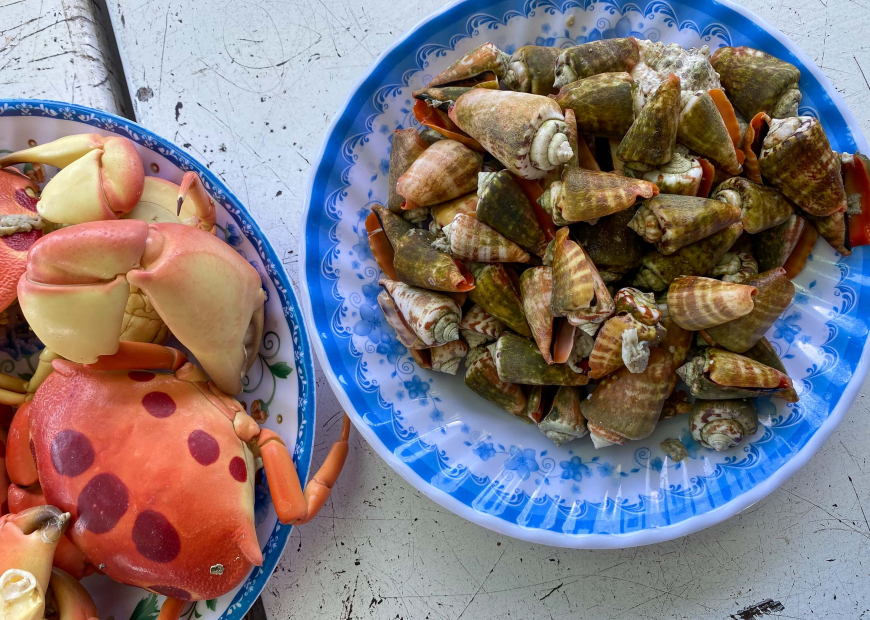 Ideal beaches
Ideal beaches
There are numerous beaches where you can go swimming or snorkeling.
Some highlights are:
Bai Nho, a little beach in Ganh Hang: Imagine a stretch of snow-white beach surrounded by rocky outcroppings, with crystal-clear seas that allow you to see all the way to the bottom. Southwest of the island, there is Small Beach, which is arguably one of its nicest. It is safe to swim and snorkel here because there aren't many boats around. The 22.6-meter concrete flagpole and the natural "infinity pool" at Ganh Hang hill are two prominent selfie locations nearby (about 650m away). There are seven of these flagpoles installed all around Vietnam. The "infinity lake," on the other hand, is a stream of water that empties into the ocean and resembles a hotel pool.
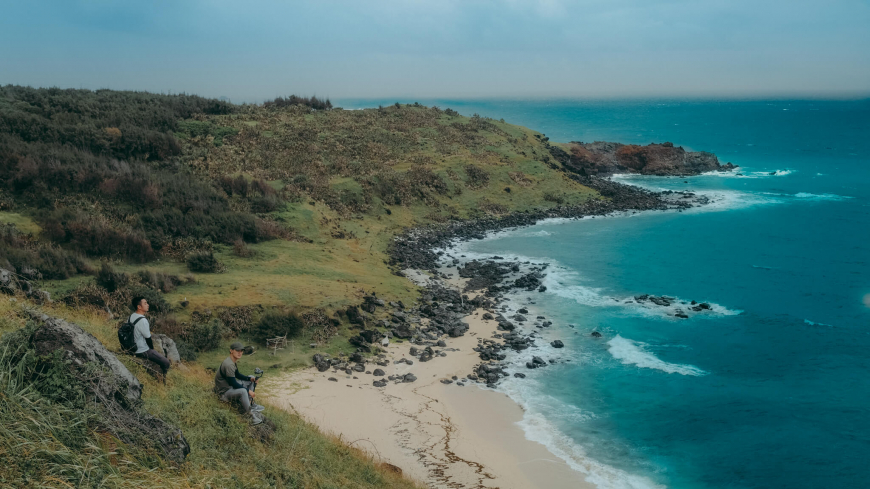 Another fantastic swimming location where you may spend the entire day is Trieu Duong Bay. A long, wide length of white sand is there, and Casuarina trees line both sides of it. They provide the ideal shade for enjoying a leisurely, tranquil picnic.
Another fantastic swimming location where you may spend the entire day is Trieu Duong Bay. A long, wide length of white sand is there, and Casuarina trees line both sides of it. They provide the ideal shade for enjoying a leisurely, tranquil picnic.
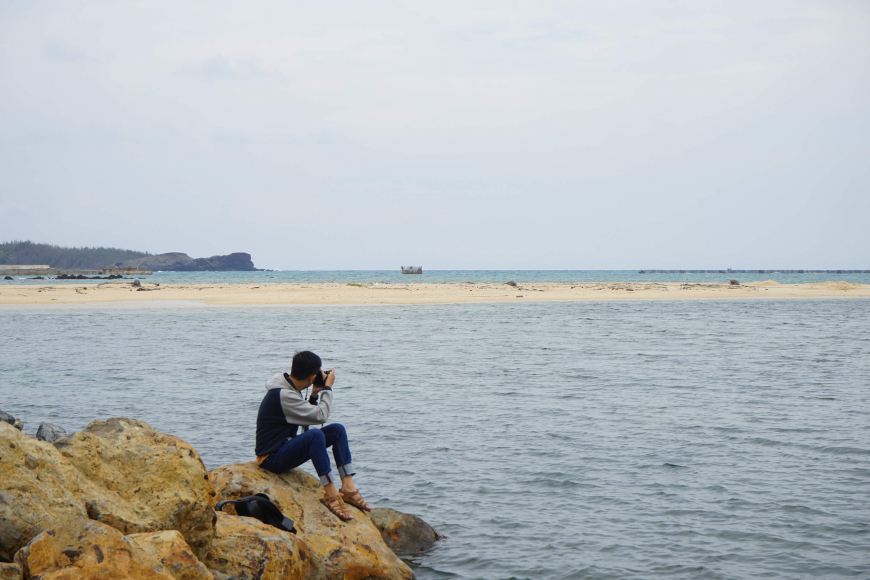 Dong Hai Beach: In the northeast is the fishing community of Dong Hai. Reach a lovely beach that the neighborhood residents enjoy by winding through its fascinating, picturesque passageways. Don't forget to bring your snorkeling supplies. Under the surf, there are many things to enjoy.
Dong Hai Beach: In the northeast is the fishing community of Dong Hai. Reach a lovely beach that the neighborhood residents enjoy by winding through its fascinating, picturesque passageways. Don't forget to bring your snorkeling supplies. Under the surf, there are many things to enjoy.
Beaches on neighboring islets: Arrange a boat journey to a few of the little islets near Phu Quy to take advantage of even more glistening waters and gentle sands. Hon Tranh, Hon Den, and Hon Hai are a few of them. Ask your host to organize a tour where you catch fish to dine on a raft house for lunch if you want a truly memorable "sea experience."
Island check-in locations
Possibly a little island, Phu Quy. However, there are numerous venues to check out and check-in. Famous locations include:
The Cao Cat Peak This holy mountain is one of the highest points on the island, rising 106 meters above sea level. The volcanic rocks have worn to create deep grooves with striking horizontal lines throughout time. To understand why it is known as "the Grand Canyon of Vietnam," climb to the summit. Additionally, this is where the Linh Son Pagoda is located, a monastery that is home to a very imposing Buddha figure. To pay for peace, worshipers come here on pilgrimage. However, there are several seats and vantage places where you can just sit and take in a spectacular sunset.
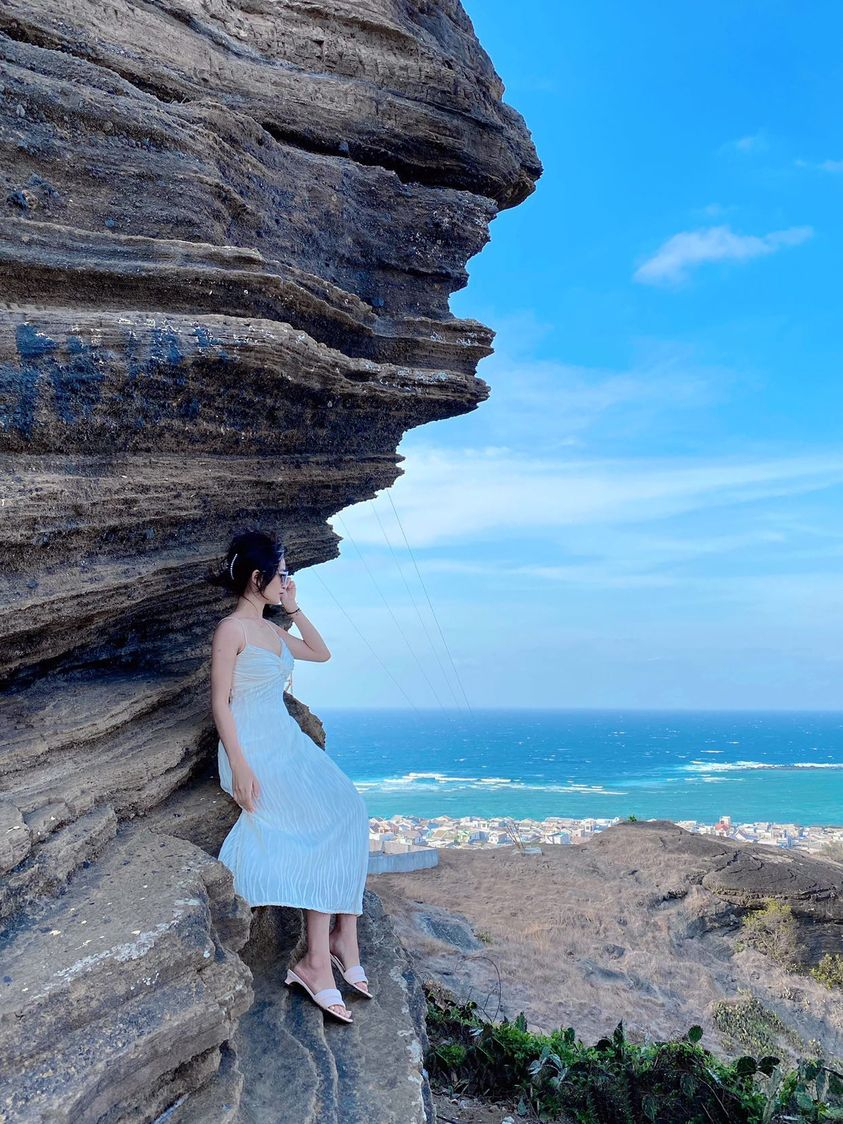 The 20-meter whale skeleton is among the specimens on exhibit at the Van An Thanh whale temple (Lang Nam Hai), an oceanographic museum close to the city's main port. The fact that there is incense burning close to its jawbone confirms the long-standing custom of Vietnamese fishermen to reverse this revered marine animal. The museum isn't always open, so make sure to call ahead.
The 20-meter whale skeleton is among the specimens on exhibit at the Van An Thanh whale temple (Lang Nam Hai), an oceanographic museum close to the city's main port. The fact that there is incense burning close to its jawbone confirms the long-standing custom of Vietnamese fishermen to reverse this revered marine animal. The museum isn't always open, so make sure to call ahead.
Phu Quy lighthouse: West of the port, at the base of Cam mountain, the lighthouse offers another breathtaking vantage point. To experience the kind of expansive views that leave you in awe of how big this lovely world is, climb the stairs. The entrance is free. But remember to leave a donation so that it can continue to be a beautiful landmark.
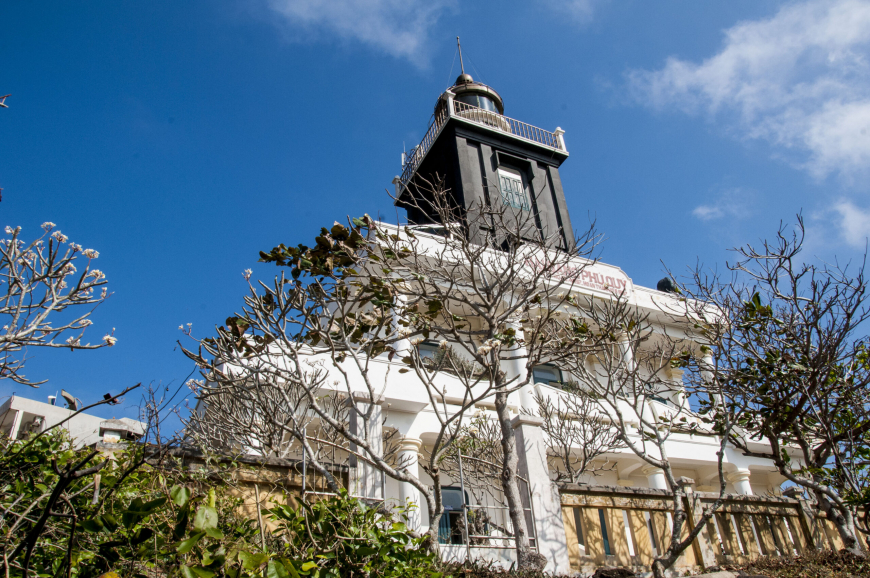 Temples and pagodas: Phu Quy contains a sizable number of religious buildings. There is the Thanh Lam Pagoda in addition to the Buddhist Linh Son, Linh Quang, and Linh Buu pagodas. It was constructed in the 18th century and is well-known for having close to 30 tranquil Buddha statues made of various materials. The Temple of Princess Ban Tranh is another option. The Cham people constructed this historical artifact in the 15th century to honor a Champa princess who was reportedly exiled to the island.
Temples and pagodas: Phu Quy contains a sizable number of religious buildings. There is the Thanh Lam Pagoda in addition to the Buddhist Linh Son, Linh Quang, and Linh Buu pagodas. It was constructed in the 18th century and is well-known for having close to 30 tranquil Buddha statues made of various materials. The Temple of Princess Ban Tranh is another option. The Cham people constructed this historical artifact in the 15th century to honor a Champa princess who was reportedly exiled to the island.
Chinese merchant Master Nai (Dinh Thay Nại) was another famous historical figure who resided on the island. He supposedly arrived on the island after having his boat capsized by a storm. He made the decision to remain and helped the sick islanders with his medical expertise. A tomb was created in his honor following his passing. He apparently continues to be regarded as the island's protector. Therefore, customary rites are performed here once a year on the fourth day of the fourth lunar month.
The island has embraced some renewable energy. Phu Quy wind turbine field. One of the provinces of Binh Thuan's three wind farms is located there, which is notable. Visit this spot to get pictures of the lovely "fan field" made up of three enormous turbines.
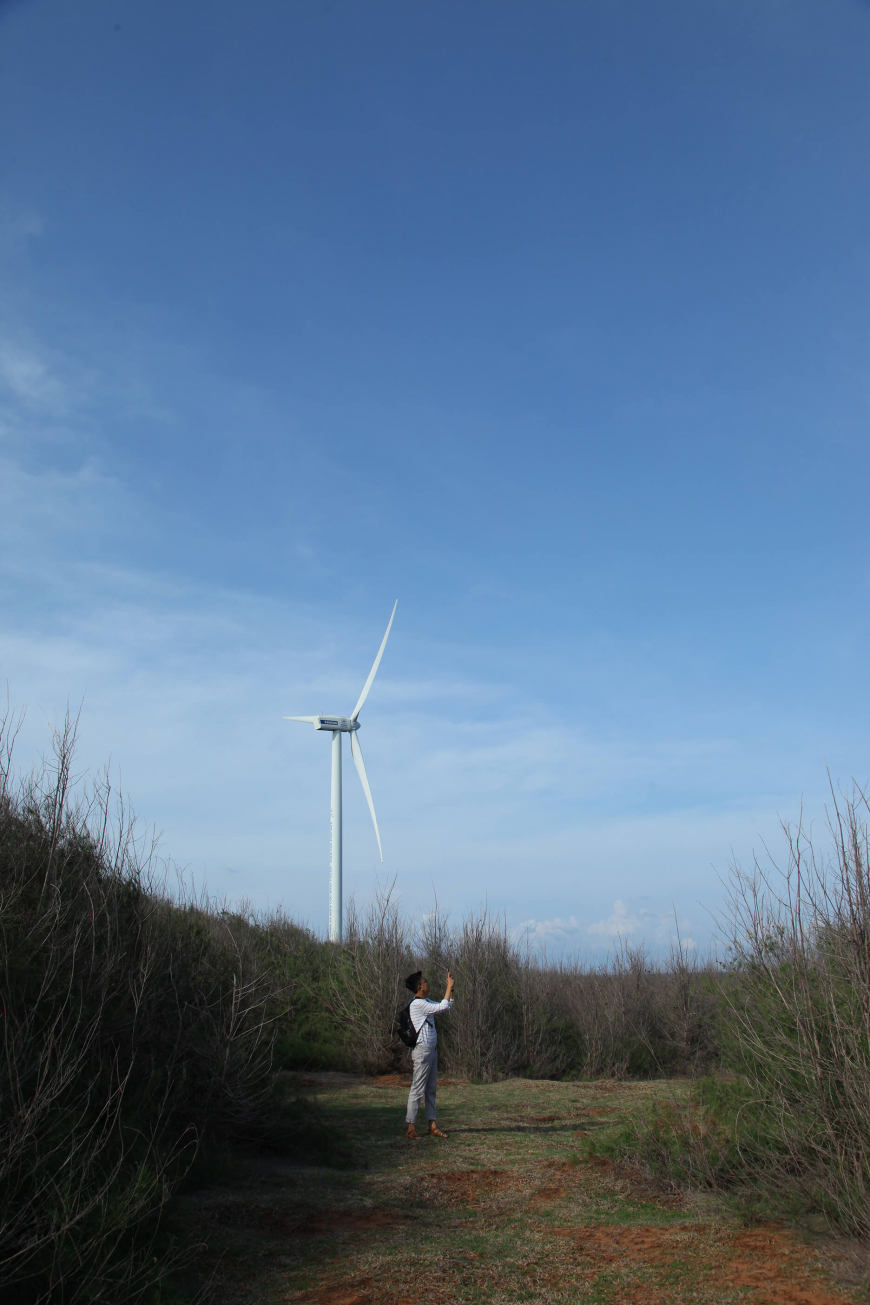 The abandoned 'fishery,' also known as Lang Duong Fish Pond or Ganh Hang Dam, is now a makeshift aquarium. Stone walls were constructed in the past to collect seawater, but they also caught little fish and shrimp. To explore the ruins, go along the low walls and look for little sea animals as you go.
The abandoned 'fishery,' also known as Lang Duong Fish Pond or Ganh Hang Dam, is now a makeshift aquarium. Stone walls were constructed in the past to collect seawater, but they also caught little fish and shrimp. To explore the ruins, go along the low walls and look for little sea animals as you go.
